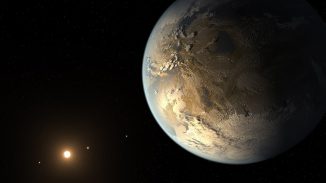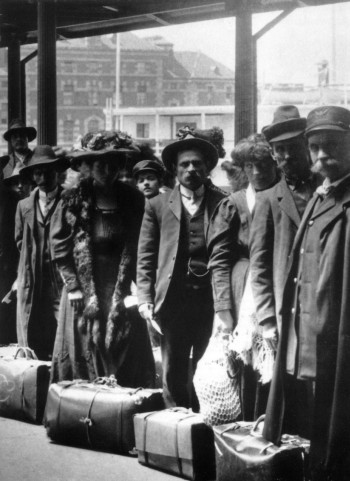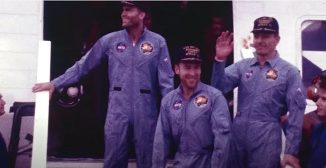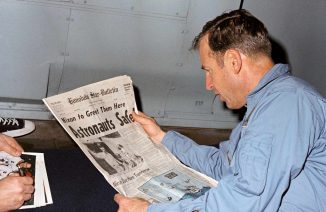61 years ago today, Americans got their first glimpse of Ford’s new sporty car. The Mustang first appeared in showrooms at the 1964 World Fair in New York City for a retail price of $2,368 (equivalent to $23,263 in 2023). Because it was introduced four months before the usual start of the 1965 production year, it is affectionately known as the “Ford 1964-1/2. READ a bit about the famous car’s earliest designs… (1964)

400,000 units were sold in its first year; the one-millionth Mustang was sold within two years of its launch, making it the most successful car since the Model A in 1927. The success of the Mustang launch led to multiple competitors from other American manufacturers, including the Chevrolet Camaro, Pontiac Firebird, AMC Javelin, and Dodge Challenger, though it wasn’t originally envisioned as a long-hooded heavy muscle car.
Project Design Chief for Ford, Joe Oros remembers: “I told the team that I wanted the car to appeal to women, but I wanted men to desire it, too. I wanted a Ferrari-like front end, the motif centered on the front — something heavy-looking like a Maseratti… as sporty as possible and look like it was related to European design.”
European design; a strange thing to hear about the origin of the most famous American muscle car.
“No one knew the Mustang was going to be as popular as it was, but it created a huge stir in the company. Everybody just loved it, even the engineers, though we must have bent 75 in-house engineering and manufacturing rules,” said Gale Haldeman, another member of the design team. “There were so many things the engineers said we shouldn’t be doing, but they didn’t want to change them either. There was so much enthusiasm right from the beginning.”
More Good news on this Day:
- Jerrie Mock became the first woman to circumnavigate the world by air–using a single-engine Cessna airplane (1964)
- All four of The Beatles had solo singles on the UK charts–Paul McCartney with Another Day, John Lennon ‘Power To The People, George Harrison My Sweet Lord and Ringo Starr It Don’t Come Easy (1971)
- FedEx, then known as Federal Express, began operations (1973)
- Pink Floyd’s album, The Dark Side of The Moon, went gold on the US charts—and stayed there more than ten years, becoming the longest charting rock LP of all time (1973)
- The Three Hundred and Thirty-Five Years’ War between the Netherlands and the Isles of Scilly ended (1986)
- Jamie Moyer became the oldest Major League Baseball player ever to pitch a winning game, throwing seven strong innings at age 49 to help the Colorado Rockies win 5-3 (2012) Read about his camp for kids on GNN
Happy 66th Birthday to everyone’s favorite dead man, Sean Bean. The famous actor has enjoyed, or perhaps not, some of the most famous on-screen deaths in TV and film, but he also stands out as the silver screen-standard bearer for the Yorkshire accent for northern England.

Bean has played major roles in some of the biggest franchises, including The Lord of the Rings, Game of Thrones, and the James Bond films.
He has described himself instead as quiet, and interviewers confirm that he is a “man of few words,” with one interviewer calling him “surprisingly shy.” He admits that he can be a workaholic; he reads books or listens to music in his spare time, and is a skilled pianist. He is also a keen gardener, welder, and sketcher. Popular in his home county, a 2018 poll for Yorkshire Day saw Bean ranked the second greatest Yorkshireman ever behind Monty Python comedian, and fellow Sheffielder, Michael Palin. (1959)
11 years ago, exoplanet science took a big leap when NASA’s Kepler Space Telescope confirmed the discovery of a rocky Earth-like planet orbiting the habitable zone of its star for the first time ever. Kepler-186f is about 580 light years from humanity, and is around 11% greater in radius with respect to Earth. 186f is just one in a five-planet system orbiting around the Red Dwarf star of the same designation. Rigorous review has revealed fascinating details about this planet, including that its placement in orbit would mean its day could stretch as long as several weeks on Earth, and that it could average temperatures around 32°F.

Exoplanet science quickly demonstrated after Alexander Wolszczan discovered the first planet outside our solar system in 1992, that planets are incredibly common things. Sure enough, just 30 years after his discovery, 5,000 such worlds have been confirmed. 44% of these worlds are rocky, like Earth.
Another interesting finding is that 186f could potentially have no tilt in its axis, resulting in an evenly distributed climate all the way up and down the surface. Earth’s tilt is sufficient to alter the pattern of seasons from the Northern Hemisphere to the Southern Hemisphere, and so much change would exist on 186f. While it is tempting to suggest sending an orbiter to the star system, it would have to cover an unnecessary-to-specific number of trillions of miles, during which time we certainly develop much better technology to observe the planet, such as the James Webb Space Telescope. (2014)
74 years ago today, the Peak District became the UK’s first National Park. Near the center of England in northern Derbyshire, it includes peaks and valleys in Cheshire, Greater Manchester, Staffordshire, and Yorkshire. The first of the national parks in England and Wales, it attracts millions of visitors each year.

Inhabited during the Mesolithic Stone Age (10,000 to 8,000 BCE), with evidence from the Neolithic, Bronze, and Iron Ages, it was settled by the Romans and Anglo-Saxons as an agricultural area, but mining grew in importance in the Middle Ages, when a variety of precious metals were discovered and quarried.
Tourism arose with the railways, thanks to the beautiful landscape, the spa towns at Buxton and Matlock Bath, and the Castleton show caves—with their amazing rock formations and rare stones.

Walking, cycling, rock climbing, and caving have become popular pursuits since conservationist Ethel Haythornthwaite campaigned for the development of the national park. She founded the Friends of the Peak District to protect the countryside from development. She also helped make green belts part of government policy four years later. (1951)
And, 52 years ago today, George Lucas started writing the treatment for a new film called The Star Wars. He had just finished his first major film, American Graffiti, and began the 13-page treatment using thematic parallels with Akira Kurosawa’s 1958 film The Hidden Fortress.

Numerous studios passed on the “weird” film idea, until Alan Ladd, Jr., the head of 20th Century Fox, believed enough in the young filmmaker to fund its development. The result was galactic gold at the box office. (1973)
Also, 118 years ago today, more immigrants entered the US than on any other date in history—11,747 people—which is why it is commemorated as Ellis Island Family History Day. Over 40 percent of the US population—100 million Americans—can trace their roots back to the 17 million immigrants who took their first steps toward freedom and opportunity at the Ellis Island processing center.
 A small sampling of those who came through Ellis Island between 1892–1924—some immigrants and some simply travelers—reveals some of the greatest names in literature, entertainment, and science. The list includes composers and conductors, Gustav Mahler, Arturo Toscanini, Leopold Stokowski, and Sergei Rachmaninoff; physicians Carl Jung and Sigmund Freud; writers Joseph Conrad, Rudyard Kipling, and F. Scott Fitzgerald; songwriters George Gershwin, George M. Cohan, Irving Berlin, and Cole Porter; entertainers Walt Disney and Charlie Chaplin, and the great scientist Albert Einstein. (1907)
A small sampling of those who came through Ellis Island between 1892–1924—some immigrants and some simply travelers—reveals some of the greatest names in literature, entertainment, and science. The list includes composers and conductors, Gustav Mahler, Arturo Toscanini, Leopold Stokowski, and Sergei Rachmaninoff; physicians Carl Jung and Sigmund Freud; writers Joseph Conrad, Rudyard Kipling, and F. Scott Fitzgerald; songwriters George Gershwin, George M. Cohan, Irving Berlin, and Cole Porter; entertainers Walt Disney and Charlie Chaplin, and the great scientist Albert Einstein. (1907)

55 years ago, the determined astronauts who averted disaster aboard Apollo 13 landed safely back on Earth after four days fighting for their lives—and NASA is celebrating again, uniting with all its workers orbiting their homes in self-isolation.
Jim Lovell, Jack Swigert, and Fred Haise were on a mission to land on the moon—the third such mission conducted by NASA after President Kennedy had rallied the country for the challenge the decade before.

The 7th crewed mission of the Apollo space program was launched from Kennedy Space Center on April 11, 1970, but the Moon landing never took place. It was aborted after an oxygen tank in the service module (SM) exploded during routine tests two days after leaving Earth. “Houston, we’ve had a problem.” Those were the famous words heard in the control room back in Texas.
See more Apollo photos, and check out this GNN story about NASA’s plans to unite with their employees and families orbiting in self-isolation at home tonight, through a special streaming of the Apollo 13 film. WATCH a new NASA video about the Apollo 13 overcoming adversity… (1970)
SHARE the Milestones, Memories, and Music…




















